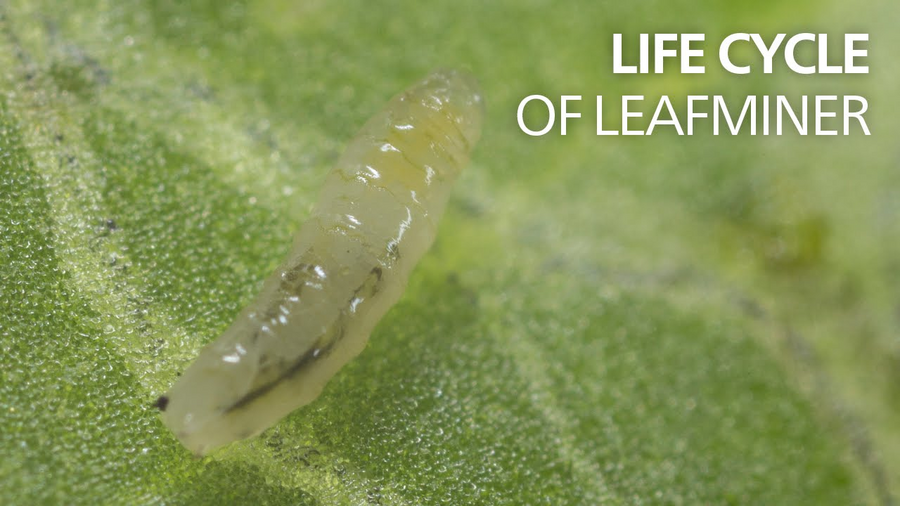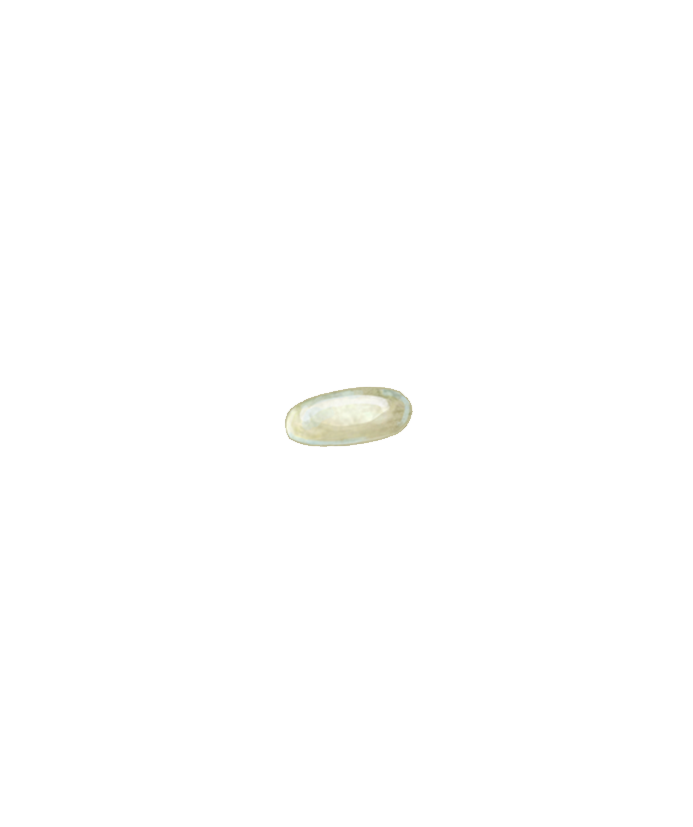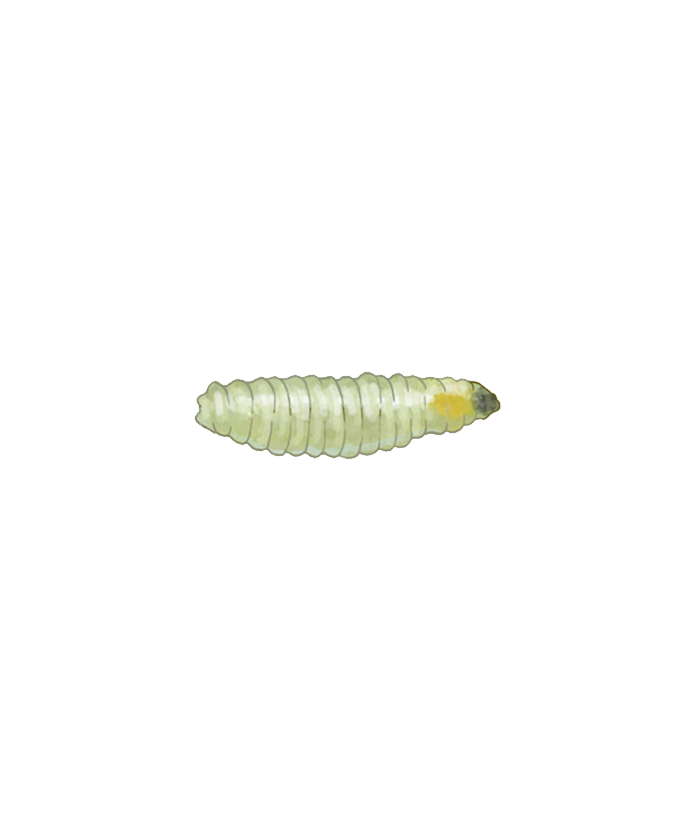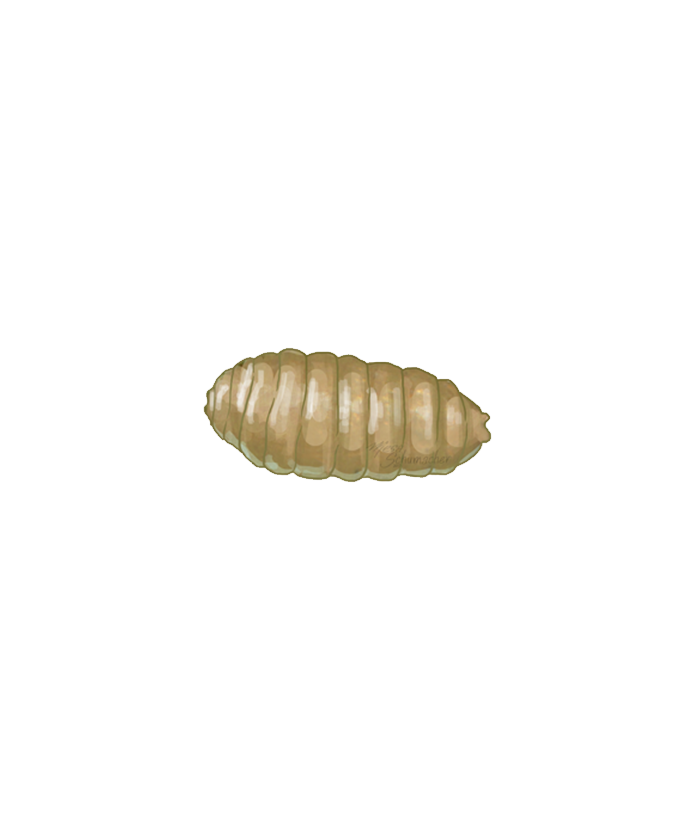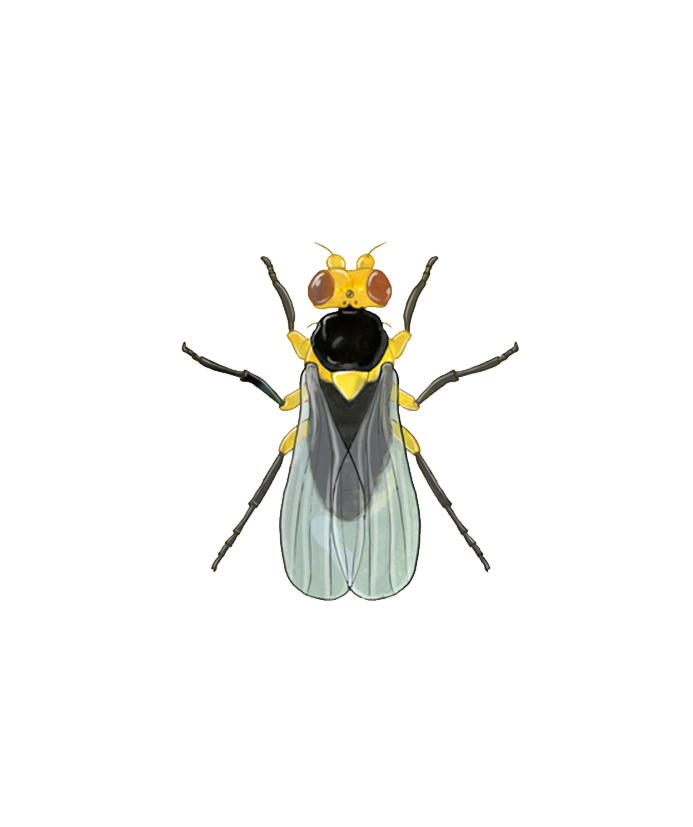General
The tomato leaf miner (Liriomyza bryoniae) has many host plants and has caused crop damage in many parts of the world, including North Africa, Europe and northern Asia. In warmer regions, the insect is found outdoors but in temperate regions it only occurs in greenhouses.
The tomato leaf miner has been found in greenhouses for decades, but has become a common pest since the 1960’s, particularly in sweet pepper, lettuce, melon, chrysanthemum and gerbera.
Life cycle and appearance of Tomato leaf miner
The life cycle of a leaf miner has the following stages: egg, three larval instars, a pupal instar and the adult fly. Adult leaf miners are small yellow and black coloured flies, at most only several millimetres long. When the adult females feed or lay eggs, they bore a hole using their toothed ovipositor, usually in the upper side of the leaf. Egg spots are oval and hard to distinguish from feeding spots.
Larvae of Liriomyza bryoniae are transparent white, older larvae have a yellow head. When the larva hatches from the egg, it begins to eat into the leaf at once, tunnelling down into the mesophyll tissue where damage is caused by extensive mines, leaving the outer layers of the leaf and stalk intact. Shortly before pupating, the grown larva cuts a sickle-shaped exit hole in the leaf with its mouth parts. After roughly one hour the larva crawls out of the leaf and falls to the ground. This occurs in the early morning. The larva crawls into the ground to pupate. A small percentage of the larvae remain hanging on the leaf and pupate there, sometimes on the upper surface but more commonly on the underside. The late third instar larva, that emerges from its tunnel just prior to pupating, is known as a prepupa. This stage lasts only a few hours.
Damage symptoms
Leaf miners cause damage to plants both directly and indirectly. The most direct damage is caused by the larvae mining the leaf tissue, leading to desiccation, premature leaf-fall and cosmetic damage. In (sub-)tropical areas this can lead to burning in fruit such as tomato and melon. Loss of leaves also reduces yield. In full-grown plants of fruiting vegetable crops, however, a considerable quantity of foliage can get damaged before the harvest is affected.
The older larvae make wider tunnels. Feeding spots made by adult females can also reduce yield, although except with ornamental crops, this is usually of less significance. Seedlings and young plants can be completely destroyed as a result of the direct damage caused by leaf miners.
Indirect damage arises when disease causing fungi or bacteria enter the plant tissue via the feeding spots.
